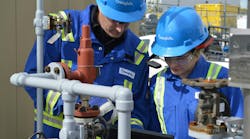MicroElectroMechanical Systems (MEMs) is a process technology that enables the combination of sensors, actuators, mechanical components, and to a certain extent, electronics on one silicon or germanium base. Typically, micro-fabrication is used to apply the various elements to a silicon or germanium wafer.
MEMs offers various advantages over traditional electromechanical sensing technologies including:
- Smaller package size
- Lower cost
- Large-scale integration
- Lighter weight
- Less power consumption
- Wider operating temperature
- Higher output signal
- Greater complexity.
As the need for sensors increases in many applications, MEMs plays a significant role in new sensor developments. Today, MEMs is increasingly used as the process technology for developing accelerometers, gyros, tilt sensing, pressure, biomedical, temperature and flow sensors. Below are terms relating to MEMs technology:
ACCELEROMETERS: An example of a MEMs device, accelerometers are used for measuring rate of velocity in direction or speed and often feature high-resolution, smart-embedded functionalities and advanced power-saving features.
ANISOTROPIC ETCHING: Wet etching process used to create a functional MEMS structure. This directional chemical etching depends upon the crystallographic ?orientations of silicon such as <111>, <110> and <100>.
ANODIC BONDING: Used in MEMS processes, anodic bonding is the process of bonding a conductor to an insulator in presence of high voltage and temperature, such as silicon to glass.
BORON: P-type dopant is used to make strain gauges in silicon-based ?pressure sensors.
CVD: CVD, or Chemical Vapor Deposition, is the process technique for depositing metal and insulating thin films involving reaction of gaseous mixtures.
DOPING: A process where boron or phosphorus is used to alter the conductivity ?of silicon.
DRY ETCH: Etching and sculpturing of silicon using Deep Reactive Ion Etching (DRIE) without chemicals.
ETCH STOP: Allows for predetermined thickness of silicon specially related to ?diaphragm thicknesses of a MEMS device.
ISOTROPIC ETCHING: This wet etching process features chemical etching or milling of silicon structures at the same rate in each direction.
MASK: Photographic image of a layer for special processes such as oxidation, ?metallization, etching, and diffusion in silicon.
MICROMACHINING: Fundamental technology for fabrication of MEMS devices, micromachining involves the process that fabricates three-dimensional ?microstructures.
MICROSTRUCTURE: Featuring small structures that range from millimeter to micrometer range. This is the essence of MicroElectroMechanical Systems.
PASCAL: An international unit of pressure (Pa) widely used throughout the world. ?Pa is rapidly replacing the use of pounds per square inch (PSI) unit.
PRESSURE: The force acting over a surface expressed in terms of force-to-area ratio.
RANGE: Measurement values specified by the upper and lower limits of a sensor.
SILICON: Silicon sensors made from silicon employing both electrical and mechanical properties of silicon.
The terms and definitions for this word search were provided by Karmjit Sidhu, Vice President Business Development, American Sensor Technologies (AST), a manufacturer of MEMs pressure sensors, pressure transducers, and pressure transmitters.

